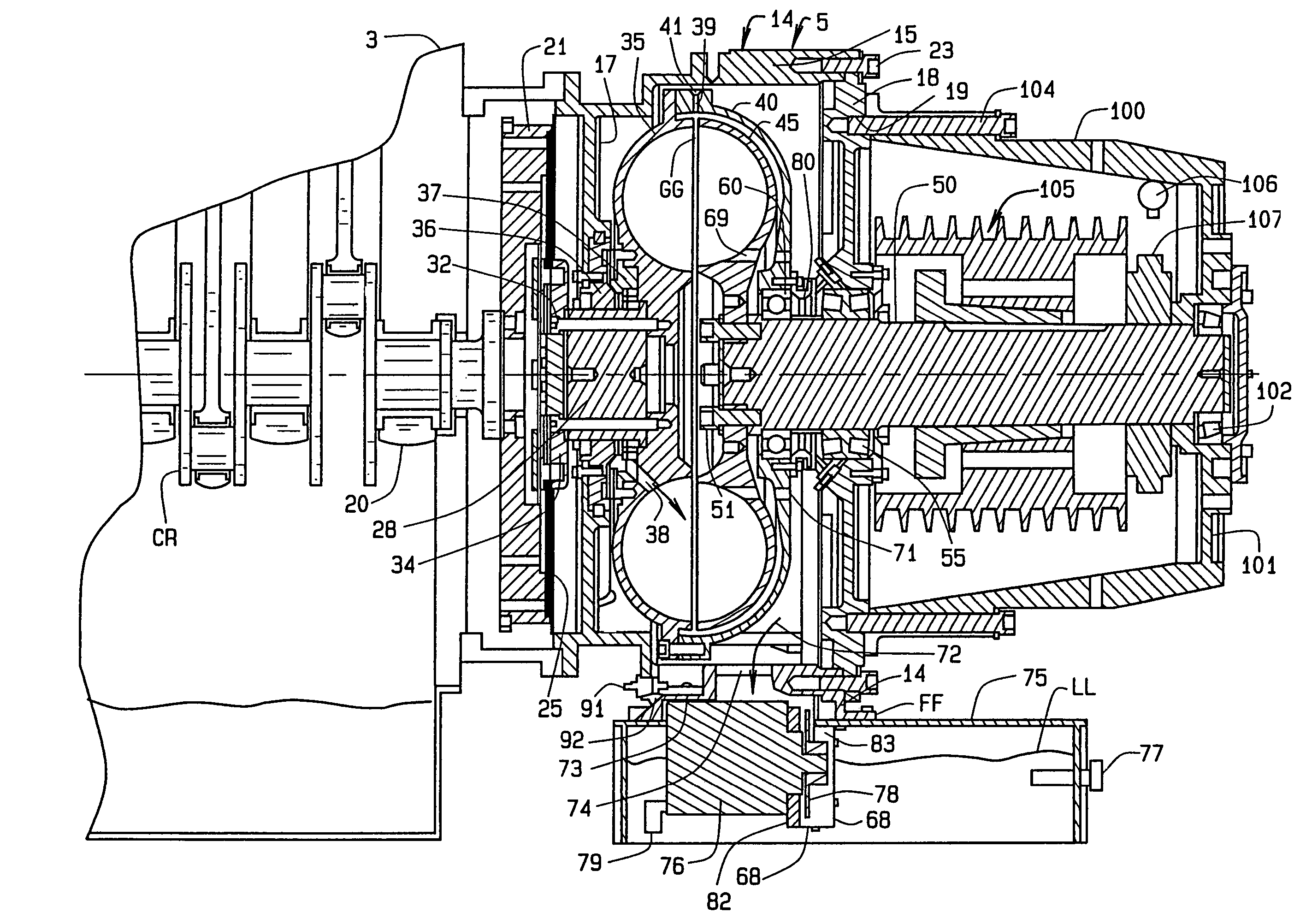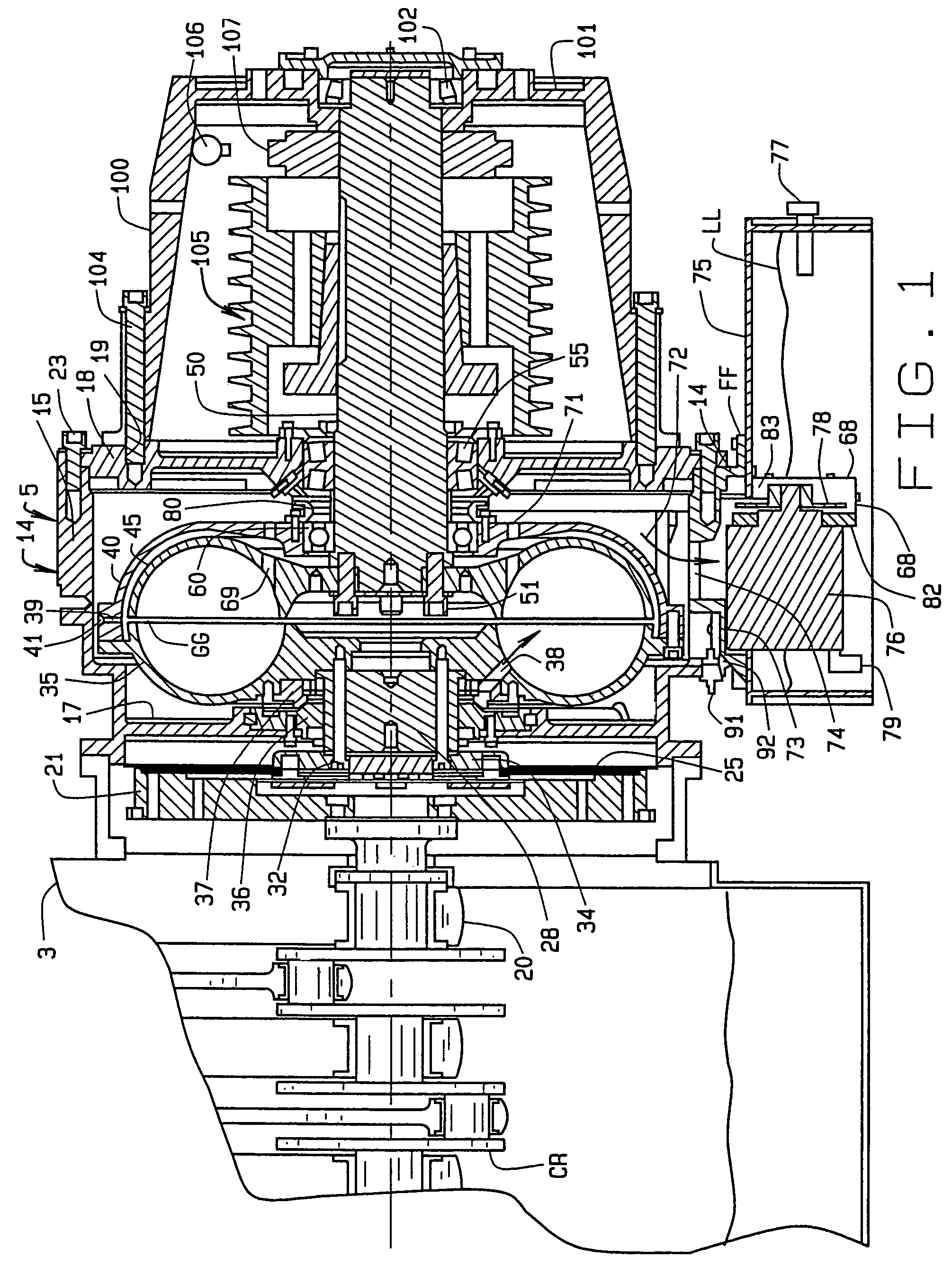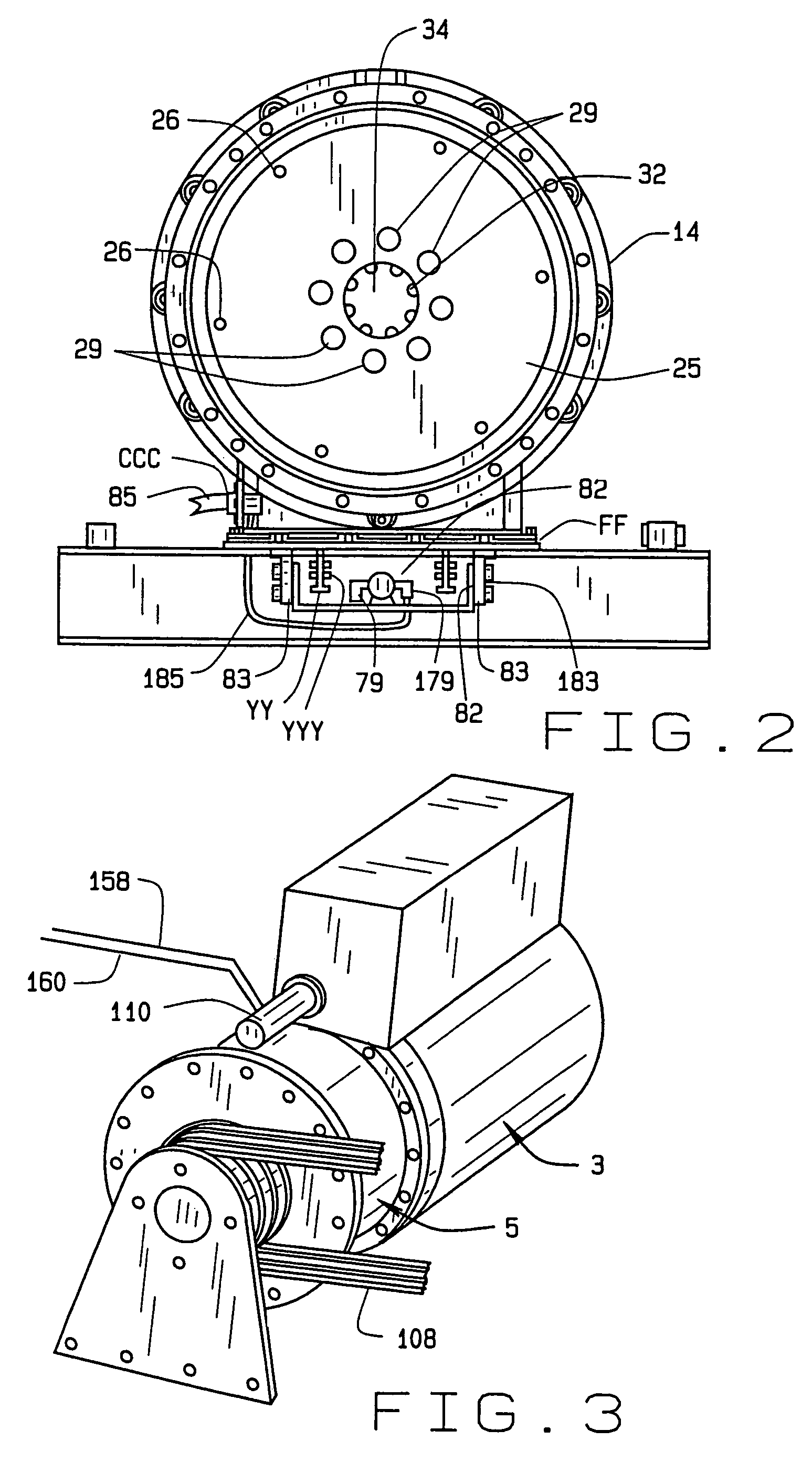Fluid coupling for mobile equipment
a technology of mobile equipment and fluid coupling, which is applied in the direction of fluid couplings, clutches, couplings, etc., can solve the problems of speed to droop, and achieve the effects of reducing the number of couplings, and improving the indicator of load
- Summary
- Abstract
- Description
- Claims
- Application Information
AI Technical Summary
Benefits of technology
Problems solved by technology
Method used
Image
Examples
Embodiment Construction
[0042]Referring now to the drawings, particularly FIGS. 3, 4, and 7, reference numeral 1 indicates an entire assembly, including a diesel engine 3 with a hydraulic pump 110 with hydraulic lines 158 and 160 with a hydraulic oil reservoir RR, a fluid coupling 5, a conveyor 9 with hydraulic motor109 with hydraulic lines 163 and 164, accompanying hydraulic controls 10 driven through a communication channel DD by programmable electronic controls 11 with electronic input signal lines 150, 152, and 162, and a hammer mill 12 with driving belts 108.
[0043]As is shown in FIG. 1, the fluid coupling 5 has a housing 14, with a generally cylindrical outer wall 15 and a flanged area FF at its bottom to which a reservoir 75 is mounted. At an impeller end of the housing, is an inner wall 17. At a runner end, a heavy wall or center housing plate 18 is bolted to the housing outer wall 15. The plate 18 has a circle of interiorly threaded bolt-receiving bosses 19 opening outwardly.
[0044]The diesel engine...
PUM
 Login to View More
Login to View More Abstract
Description
Claims
Application Information
 Login to View More
Login to View More - R&D
- Intellectual Property
- Life Sciences
- Materials
- Tech Scout
- Unparalleled Data Quality
- Higher Quality Content
- 60% Fewer Hallucinations
Browse by: Latest US Patents, China's latest patents, Technical Efficacy Thesaurus, Application Domain, Technology Topic, Popular Technical Reports.
© 2025 PatSnap. All rights reserved.Legal|Privacy policy|Modern Slavery Act Transparency Statement|Sitemap|About US| Contact US: help@patsnap.com



